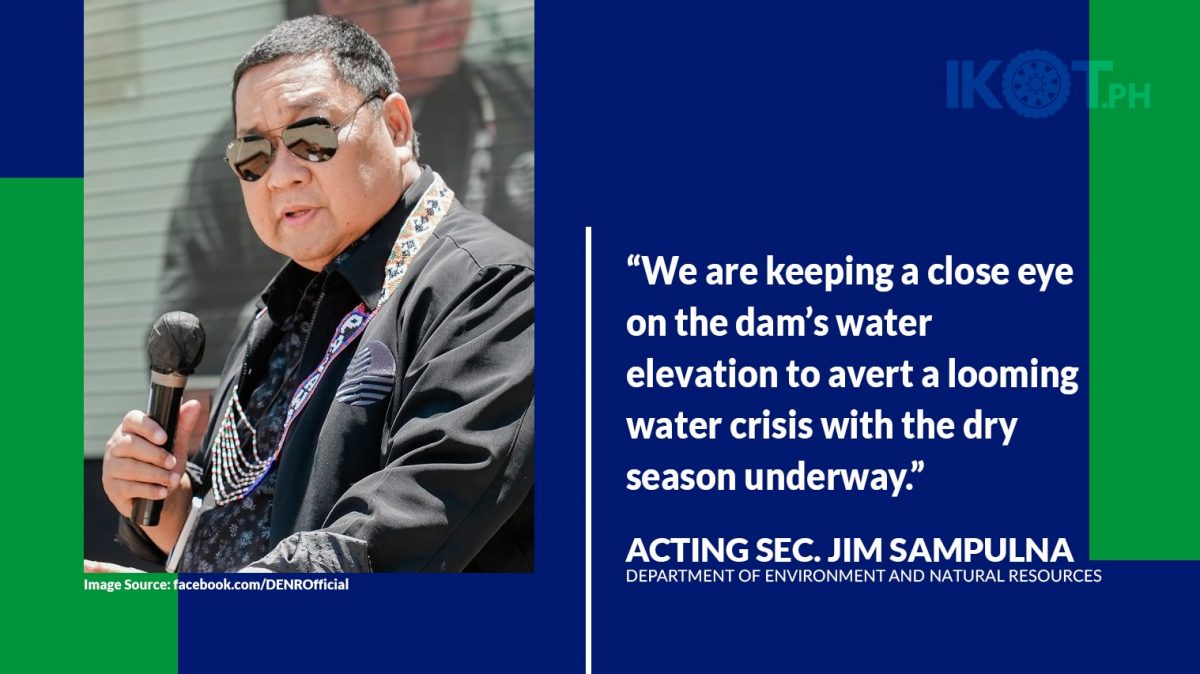The Department of Environment and Natural Resources (DENR), through the National Water Resources Board (NWRB), continues to closely monitor the water level in Angat Dam and its operations amid its low-set water level.
Acting Environment Secretary Jim Sampulna said members of the NWRB’s Technical Working Group in the management of water supply from Angat Dam are “keeping a close eye on the dam’s water elevation to avert a looming water crisis with the dry season underway”.
“Through the NWRB, we have already laid down preventive measures such as cloud seeding.”
“Through the NWRB, we have already laid down preventive measures such as cloud seeding so that the public, especially those in Metro Manila, is assured of a steady water supply with the ongoing COVID-19 pandemic,” Sampulna said.
As of April 7, 2022, the water elevation in the reservoir slightly rose to 194.15 meters from the lowest elevation of the year which was 190.63 meters last April 4, 2022.
This increase is mainly due to the shear line or tail-end of a cold front and a low-pressure area in the Mindanao region.
The widespread rain shower is expected to further raise the water level in Angat Dam. caused by inflows from runoff water.
The widespread rain shower, which was experienced in the majority of the Luzon region, is expected to further raise the water level in Angat Dam caused by inflows from runoff water.
According to the latest rainfall forecast and Angat Dam, water level simulation, the lowest dam water level will reach 183.98 meters in June. Hence, it may not breach the minimum operating water level of 180 meters.
The NWRB has approved a water allocation of 50 cubic meters per second (CMS) to the Metropolitan Waterworks and Sewerage System from April 1 to 15, and five CMS to the National Irrigation Administration from April 1 to April 30.
Although the increase in water elevation slightly improved the current and projected level of the dam, the water level in the dam is still not secured.
The public is urged to continue implementing water conservation measures in their households, workplaces, and businesses.
Aside from saving freshwater from taps, other water efficiency methods such as rainwater collection and water recycling can also be adopted.


